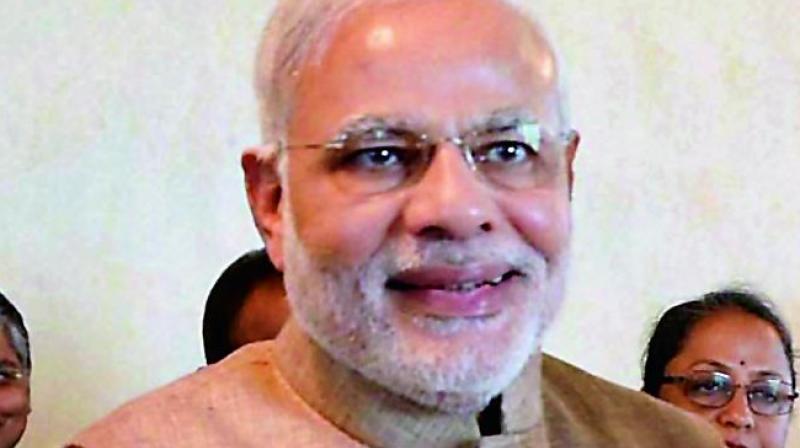Lateral' entry won't fix basic govt glitches
Prime Minister Narendra Modi has mastered the art of utilising insecurity as an instrument of his state policy.

Prime Minister Narendra Modi has mastered the art of utilising insecurity as an instrument of his state policy and needs to demonstrate this at frequent intervals. Or else, when he has better things to do — and rather quickly, as time is running out — he has decided to rattle the complacent and over-secure babudom of New Delhi. That may explain his intention to recruit 10 new “professionals” — the definition of “professionals” has been kept delightfully vague — for lateral entry as joint secretaries in the Central government. The media decided almost immediately that the Indian Administrative Service was threatened because few in it really distinguish between different species of bureaucrats and could not care less if the incumbent came from the IAS or from the Indian Posts and Telegraph Accounts and Finance Service. To most people, they appear equally obnoxious or are avoidable — unless a scoop or a soundbite becomes imperative. Besides, not many people know that the earlier predominance of IAS officers at the level of joint secretaries — the real cutting edge of Bharat Sarkar — has long gone, partly because other services have to be accommodated and partly because the states are unwilling to let their best secretaries go to the Centre. Leading the latter brigade for over a decade was Mr Modi himself, when he was chief minister of Gujarat.
Serving officers survive New Delhi’s corridors of power on the age-old aphorism “every man for himself and the devil take the hindmost”. But the Opposition cried foul and not without reason, for they simply do not trust an over-controlling Prime Minister who has never disguised his scorn for them. They suspect this to be yet another attempt to “saffronise” the administration through the backdoor entry, to bypass the Constitution and the Union Public Service Commission (UPSC). This fear is not unreal as the advertisement issued by the department of personnel and training does not mention the UPSC anywhere, and under Article 320 of the Constitution, recruitment to senior posts in notified services — Central or all-India — has necessarily to be done in consultation with the UPSC. The PM may have vetted his idea with legal experts but by being miserly with details, or just imperious, the government could always claim that it never had any intention to circumvent the constitutional provisions.
The UPSC has three standard and time-tested methods of recruitment — namely, by conducting examinations for selecting directly from the open market; or by promoting to higher posts those who are already in service after rigorous screening; and finally, by transferring incumbents from one post to the other within the government setup. The current proposal to induct 10 “professionals” would fall in the first category, and it would be most appropriate if the UPSC is entrusted with a mandate to select applicants on a fast-track mode. This is quite possible and feasible and in its seven decades of working experience, the commission has gone through a lot of such exercises. It may conduct special examinations to be fair to all applicants or it could just interview them, which is a bit subjective and thus open to criticism. Or it could do both — but the entire process does call for a bit of time and may spill over beyond May 2019, when a freshly-elected government would have to be installed. As a quintessentially stodgy and stable body, the UPSC detests being rushed around and there are instances when posts can take several years to get filled, for various reasons.
A government in a hurry — that did not utilise the earlier four years which it had to test these flashes of inspiration — may not be terribly enthused by the slow and steady modus of the UPSC. No one really knows, and a lot may depend on how the wind blows.
Coming to more relevant issues, just 10 new entrants can hardly shake up or devastate the level of joint secretaries in the Central government. The total number is around 470, though this keeps changing as posts are “upgraded” or “kept in abeyance” at times. But then, it could also be the thin edge of the wedge. It is clear that Prime Minister Modi is simply taking advantage of the undisguised and widespread frustration at the failure of the IAS and the rest of the bureaucracy to be more receptive, less obstructive and to deliver at the speed that the 21st century demands. But colonial procedures and the clogging need to tackled at Gangotri, not at Ganga Sagar. If we assume that the highly competitive UPSC examinations still select the best possible candidates each year, we need to examine what happens thereafter. All those who qualify can surely not become pompous, insensitive, slothy or corrupt overnight, unless the system demands it and traumatises them into such undesirable conduct.
Every government since Independence — including this most hyped one — has simply permitted the political class to ride roughshod over the system and only unabashedly user-friendly babus could ever make it anywhere.
The vast majority was simply numbed into compliance as each incoming government had “massive programmes” to deliver that they had promised their voters and no one really has ever had the time to discuss problems relating to the engine.
Each incoming government had its own blue-eyed boys who came from the same caste, community, district or “ideology” and the really skilful could swiftly adapt to each new minister. The show thus went on. There is, for instance, no reason why Mr Modi could not introduce the system of “pensioning off” large numbers at each stage of promotion, as is done in the armed forces. One had expected the mass-scale slaughter of corrupt officers after his 2014 mandate, but nothing spectacular happened.
Constrictive rules could have been slashed mercilessly in four years, but this was not seen as a priority task. More energy was spent on gimmickry and in playing around with alphabets like kindergarten kids to find new acronyms for recycled schemes.
The professional specialisation of IAS officers was never encouraged as Mr Modi’s own tightly-controlled DoPT forced highly-qualified engineers, management graduates and other university toppers (who constitute the bulk of the IAS) to move from atomic energy to gobar gas.
Besides, this government will be remembered not only for the chilling fear that it has spread amongst terribly insecure babus (for no productive reason), but also as one where imaginative and innovative officers were hardly rewarded — but the sycophants prospered, as never before.

